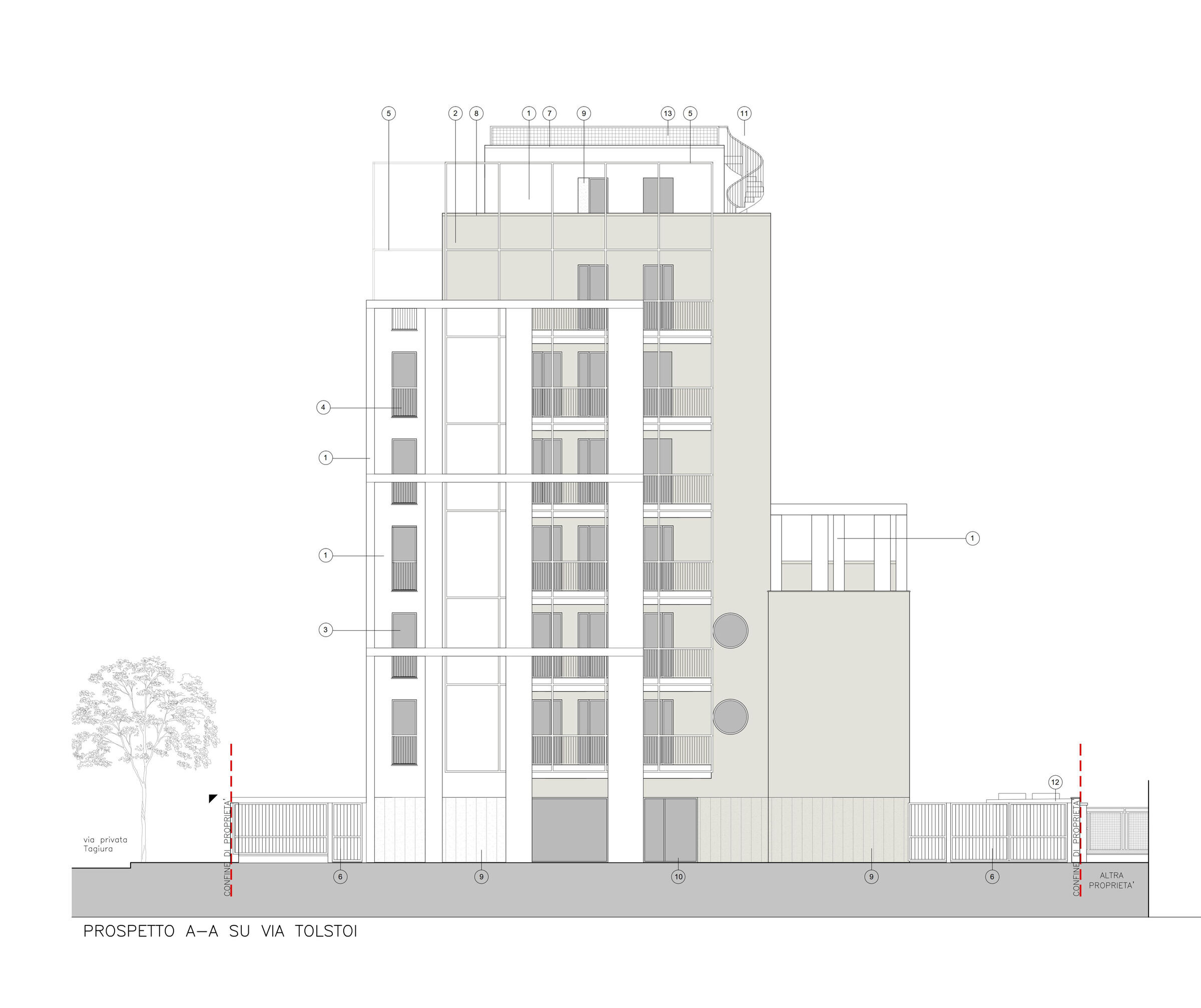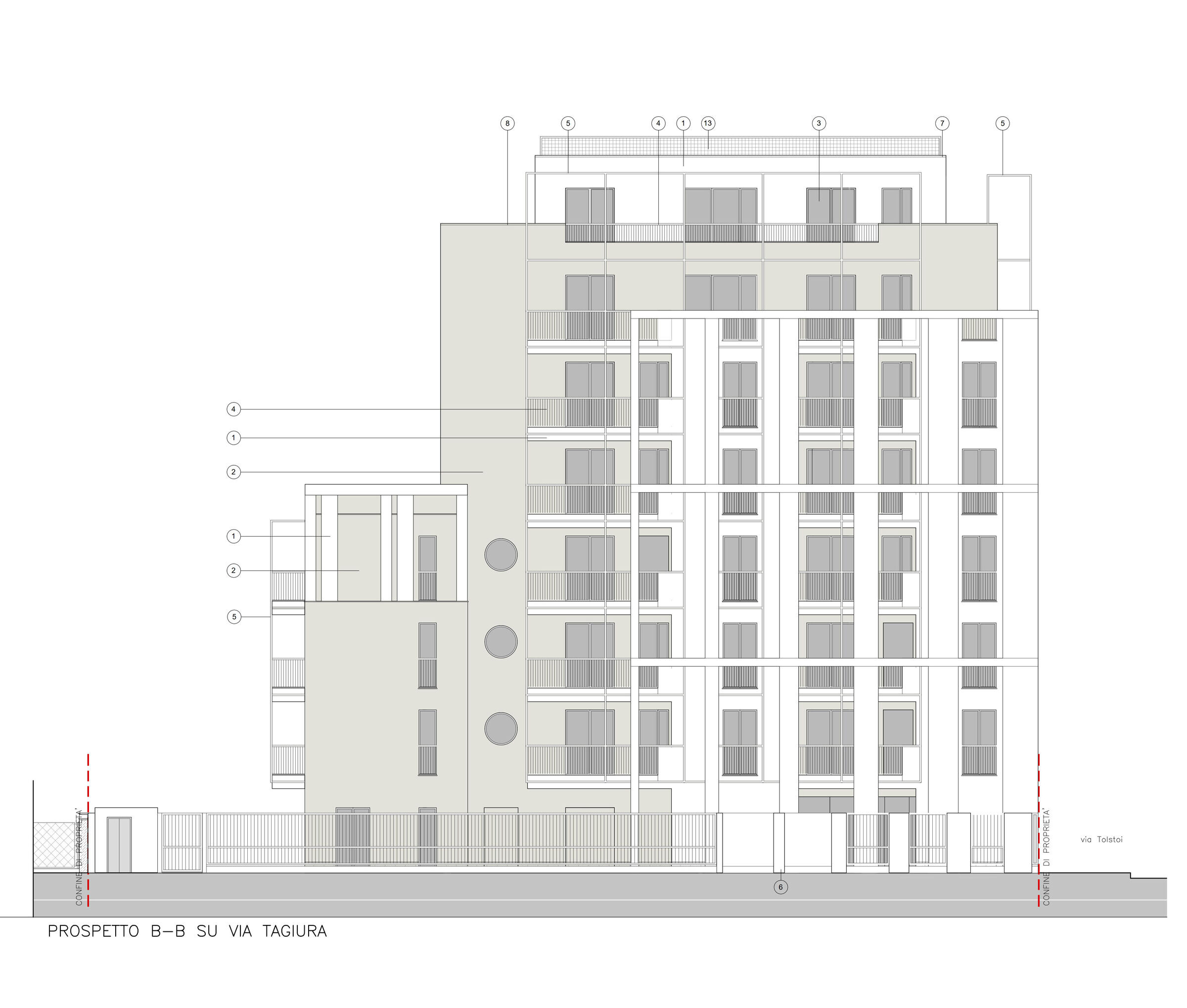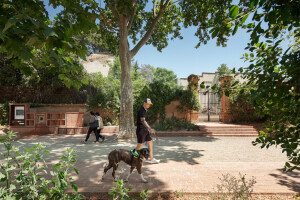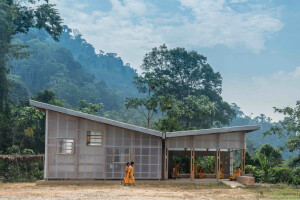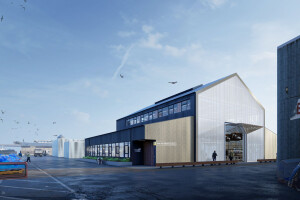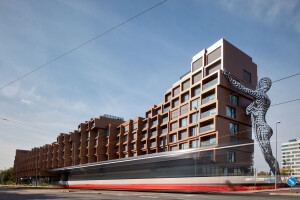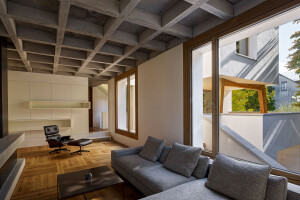The intervention in question has been designed as a building replacement through the demolition of a building for commercial use, consisting of a basement and an above-ground floor within a lot at Via Leone Tolstoi 87, at the corner of the private road Via Tagiura in Milan. The new building with the same GFA, exclusively for residential use, has 6 above-ground floors each accommodating from 2 to 5 housing units, plus a penthouse and upper penthouse divided into 2 side-by-side duplex units, and a basement for garage use.
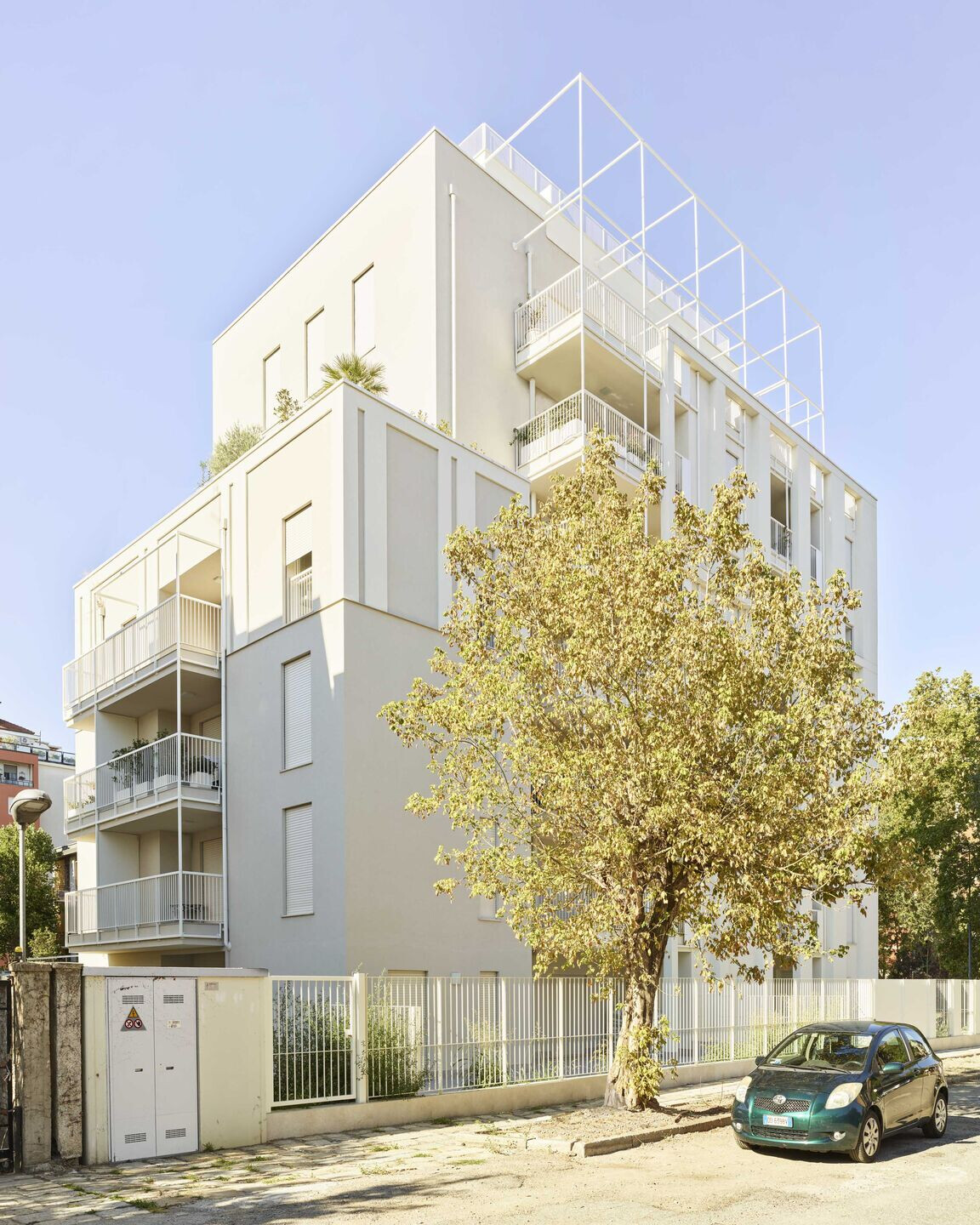
The project, named Casa Calipso, is part of our studio’s research on modern Milanese syntax, with specific reference to the periods in which it was expressed in the 20th century – notably Rationalism in the inter-war period and Reconstruction – up to today’s reactivation by various authors, both in professional contexts and in theoretical-critical works.

The design idea for Casa Calipso is based on the juxtaposition of three bodies, a larger one near the intersection of the streets and two smaller ones connecting with buildings constructed on the adjoining lots. The Casa maintains its alignment along Via Tolstoi and recedes from the private Via Tagiura, aligning with the buildings built on the adjoining lots. The larger body is a pure volume, finished in white plaster, screened on the sides facing the streets by a white, double-row frame – complemented by syncopated partitions and containing outdoor dining loggias – and finished with a white penthouse and upper penthouse set back from the façade line, thereby carving out generous terraces. The smaller bodies are pure volumes, finished in white plaster and crowned by a white frame, echoing the frame of the larger body and framing two terraces for the third- and fourth-floor units.
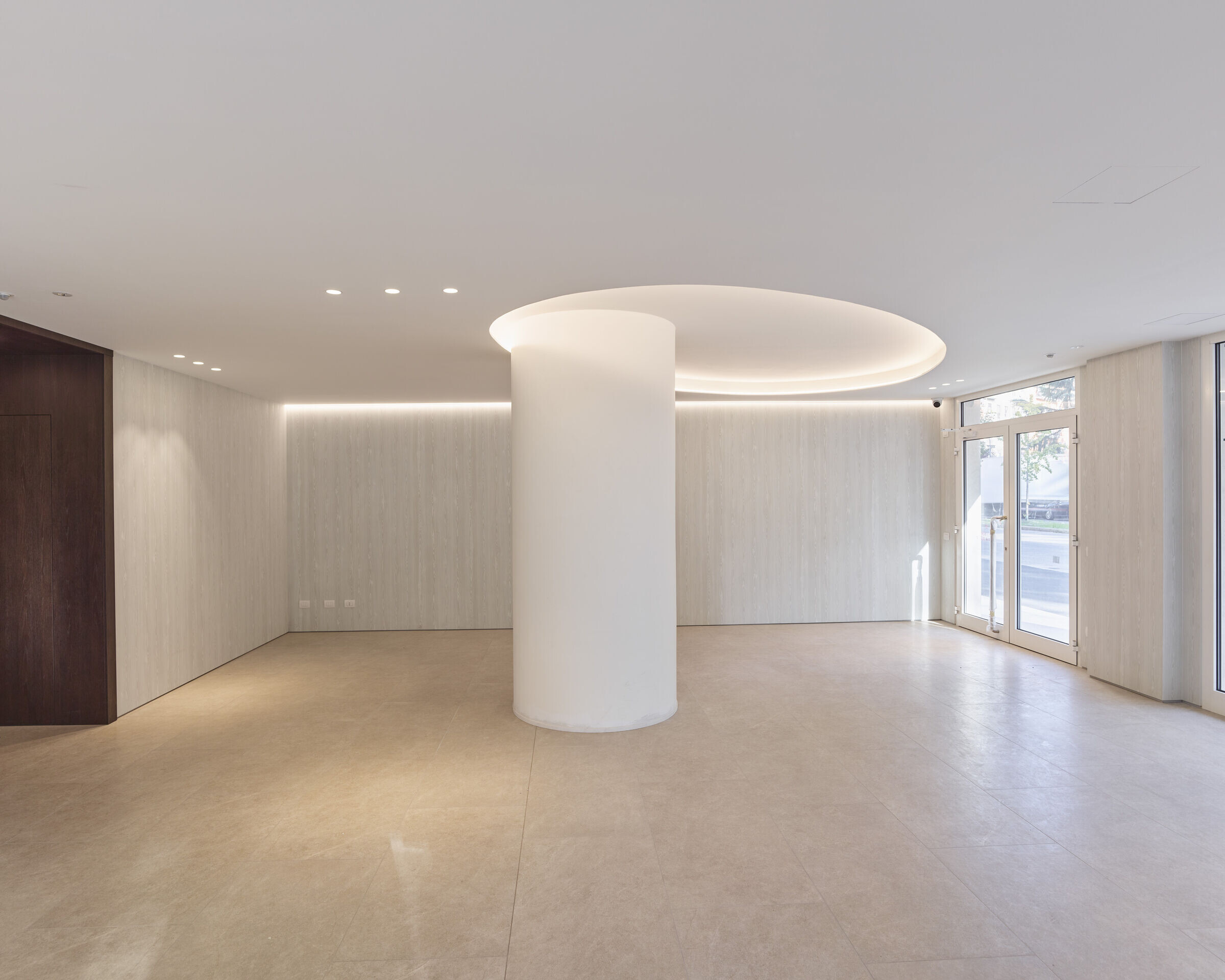
The interplay between multiple parts of the building is a recurring feature of a number of Milan’s modern buildings, such as Ignazio Gardella’s Casa Tognella, consisting of two bodies side by side, one with a pure volume and one on the street distinguished by its frame, or the buildings on Via Lanzone, Asnago and Vender’s Condominio XXI Aprile, and the Latis condo in collaboration with Cupello, in which the lower buildings on the street are flanked by larger bodies.

The composition of the main body of the Casa Calipso, in addition to the articulation of volumes and the frame, is completed with a small metal frame, in cross-section like the handrail of the balcony parapets and along their line, slightly offset from the main frame. This decorative element, together with the crown of the lower bodies, connects the skyward end of the Casa, harmonizing the progressive set-backs between the various volumes. All of the windows, except for six round ones, are vertically oriented and are supplemented by metal rod parapets where they do not open directly onto balconies.
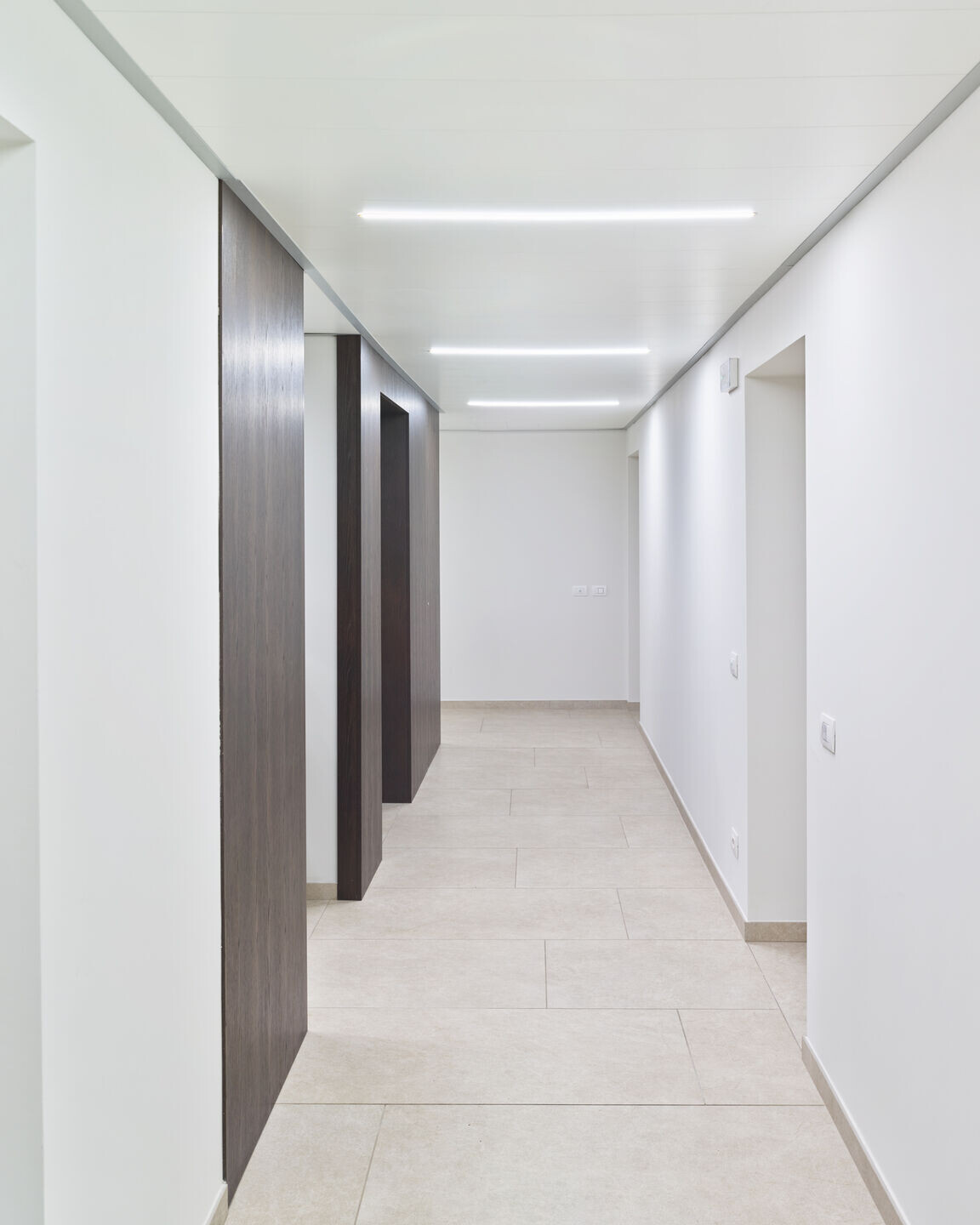
The use of frames is another recurring feature of the Milanese Modern, either in the more substantial geometry, such as in Figini and Pollini’s Via Broletto residential building or in their horizontal skyscraper on Via Harar, in which, among other things, there is a double order, in the lightweight geometry of the small metal frame, like in Giancarlo Malchiodi’s building on Via Anelli, in the aforementioned Latis apartment building on Via Lanzone, and in Guglielmo Mozzoni’s delicate diaphragms on Via Fatebenefratelli and Via Corridoni, especially in the latter where they frame the sky.

The views of the Casa Calipso from the intersection and from the two streets offer different ways of reading the built bodies. From the intersection, one grasps the predominance of the frame, which, with the altana and the metal frame, conceals the set-back body so that the two smaller volumes appear as small, juxtaposed buildings. The views from the streets, on the other hand, reveal the dual nature of the larger body, both pure volume with regular windows and a syncopated white diaphragm that deviates to accommodate the loggia spaces.

The plan configuration of the Casa reflects this articulation, especially on the ground floor where pure volume set-backs give way to porticoed spaces, one for the entrance from the public street, the other two on the garden. Additional internal common spaces are a double atrium, technical and ancillary rooms including the bicycle and baby-carriage room and the garbage room, with access from the outside.
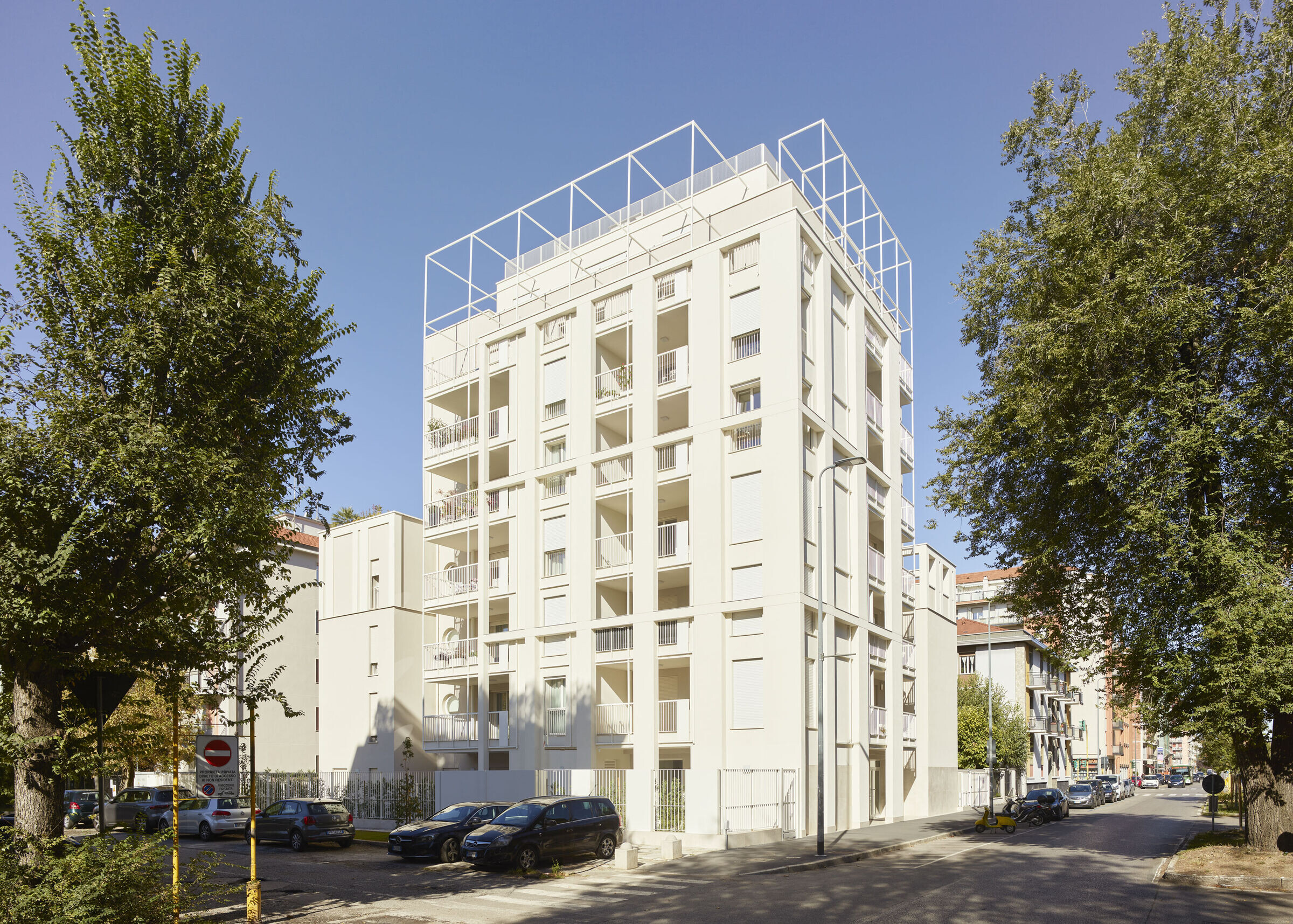
The vertical access is from a single staircase, in a central position and serving a varying number of building units per floor: smaller size units (two- to three-room apartments) make up levels consisting of five units; larger units may result in two or even one unit per level. The variation in interior units does not result in variation in the windows, which are aligned according to precise views from contiguous sidewalks. All units are at least double-facades, with sleeping areas facing north or east-west and living areas facing south or east-west, with the exception of two single-facade units facing south.
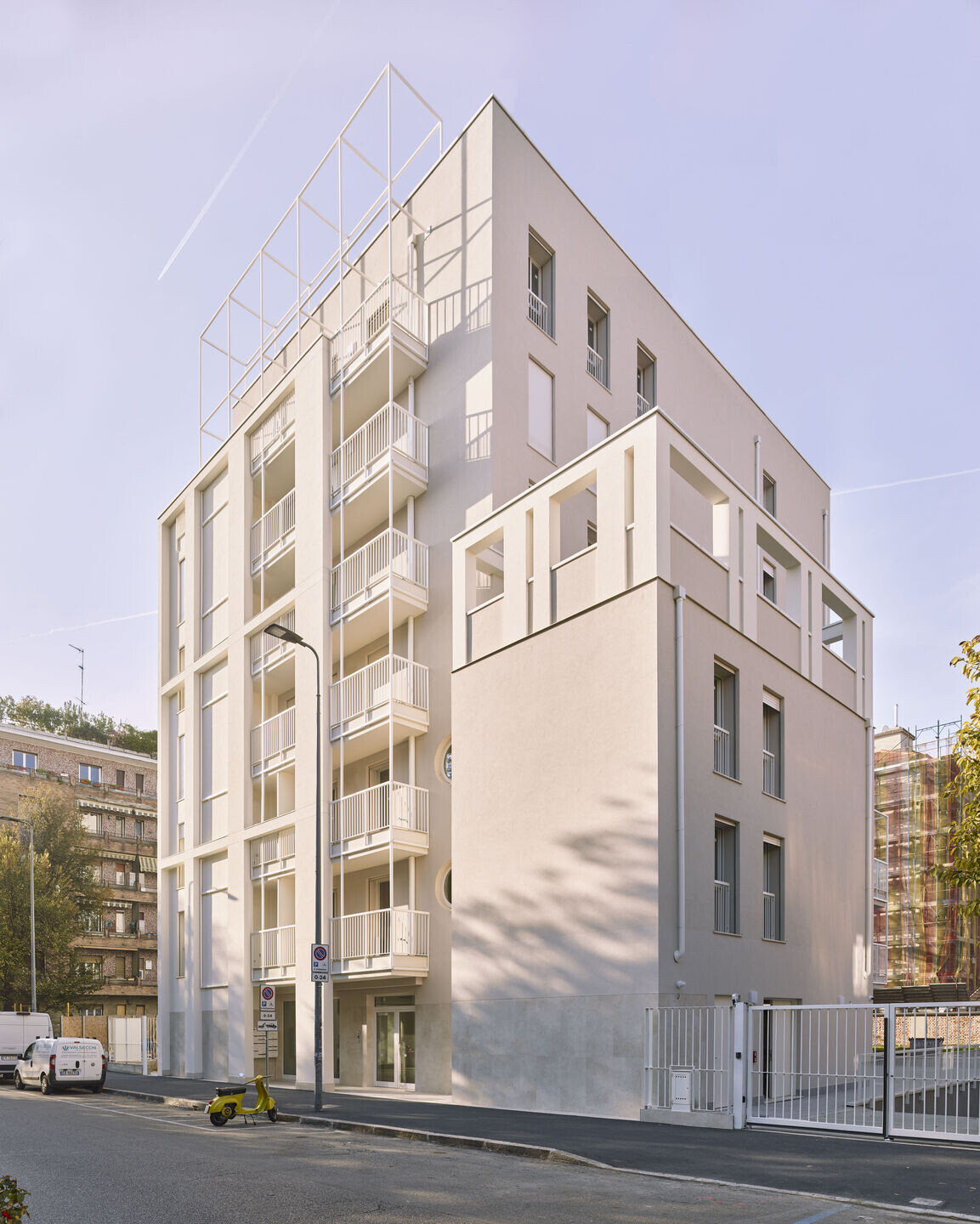
Team:
Architects: Degli Esposti Architetti
Lead Architects: Arch. Lorenzo Degli Esposti, Arch. Paolo Lazza
Supervision of construction: Arch. Lorenzo Degli Esposti, Arch. Paolo Lazza, Arch. Francesca Grassi
Structural design: Eng. Fabio Maria Beretta, Lentate sul Seveso (CO)
Design of mechanical systems, acoustics: studio termotecncico di Poletti Massimiliano, Treviolo (BG)
Electrical systems project: p.i. Stefano Papetti, Levate (BG)
Construction supervision: Eng. Luca Gafforelli, Foresto Sparso (BG)
Security manager: Geom. Fulvio Gregori, Foresto Sparso (BG)
General contractors:
Impresa Gregori e Lochis S.n.c., Foresto Sparso (Bergamo)
Developer: Gruppo Gafforelli
Photographer: Maurizio Montagna

